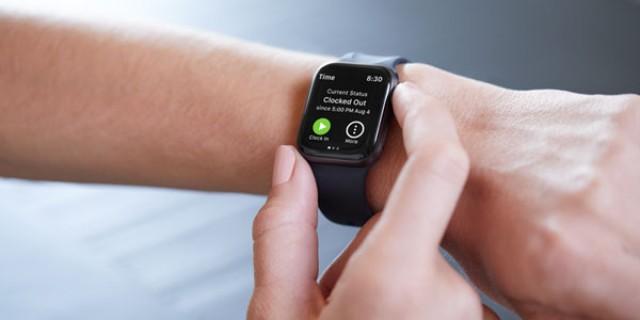Creating a welcoming restaurant experience takes more than great food and friendly staff. It also means making sure every guest, including those with disabilities, can get through the door, navigate the space, and enjoy their meal without barriers.
The Americans with Disabilities Act (ADA) plays a key role in making restaurants more accessible to everyone. ADA restaurant requirements cover everything from entrances and restrooms to signage and seating. For business owners, this means thinking through the details — how someone enters, moves through the space, uses the facilities, and interacts with menus or signs. It's all part of creating an environment where people feel comfortable and welcome.
The Importance of ADA Compliance for Restaurants
ADA compliance for restaurants is about more than just meeting legal requirements — it's about delivering an inclusive and respectful experience for every guest. According to the Centers for Disease Control and Prevention, more than 1 in 4 adults in the United States (or 28.7 percent) have some type of disability. That means accessibility isn't a special feature; it's a fundamental part of good service.
From clear paths of travel to accessible restrooms and entryways, each element of restaurant ADA compliance contributes to a more welcoming environment. Failing to comply can result in costly consequences, including lawsuits, Department of Justice investigations, and substantial fines. And beyond legal risks, poor accessibility can damage your brand and exclude loyal patrons.
Restaurant compliance is a shared responsibility between property owners and business operators. Taking a proactive approach to ADA requirements for restaurants helps reduce risk, support your team, and expand your customer base.
Key ADA Regulations for Restaurants
Understanding ADA rules for restaurants can feel overwhelming at first, especially with so many structural, operational, and communication factors to consider. Restaurant owners have a responsibility to make sure that their space is accessible. Getting these details right helps them meet legal standards while making the experience better for everyone who walks through the door.
Overview of ADA Compliance
Restaurants are considered “public accommodations” under ADA Title III, which means they must provide equal access to facilities and services for individuals with disabilities. This includes both physical accessibility and effective communication.
Physical Accessibility Requirements
To comply with the ADA, restaurants must ensure that essential areas — such as parking, entrances, seating, and restrooms — are accessible to people with disabilities. The list below highlights five spots that often need the most attention.
Entrances & Exits
- Minimum doorway width: 32 inches
- Ramps required for steps (slope ratio of 1:12, width of 36 inches)
- Thresholds should be no higher than 0.5 inches
- Automatic door openers are recommended
Interior Circulation
- Aisles: 36 inches wide minimum
- Turn space for wheelchairs: 60-inch diameter or T-shaped space
- Floors must be slip-resistant and level
Tables & Seating
- Table height: 28–34 inches
- Knee clearance: 27 inches high, 30 inches wide, 19 inches deep
- At least 5% of seating must be accessible and dispersed throughout the dining area
Service Counters
- Accessible portion height: 36 inches max
- Clear floor space: 30 x 48 inches
Restrooms
- Doorway width: 32 inches
- Grab bars: 33–36 inches above floor
- Sink height: ≤34 inches, with 27-inch knee clearance
- Fixtures must be reachable and operable with one hand
Parking
- Accessible spaces: 1 per 25 spaces
- Van-accessible spaces: wider with appropriate signage
- Located near entrance with clear accessible route
Communication Accessibility
Accessibility isn't just about physical spaces — it also includes how information is presented and communicated. These features help all guests, including people with vision, hearing, or cognitive disabilities, move through the space comfortably and enjoy their visit.
Menus
- ADA doesn’t require braille or large print menus, but restaurants must ensure effective communication
- Options include:
- Large print menus (18-point font)
- Staff assistance
- Digital menus compatible with screen readers
Assistive Listening Systems
- Required in areas with amplified sound (e.g., performance spaces)
- Must include hearing-aid compatible receivers
Signage
- Tactile and braille signs for restrooms, exits, and directional info
- Mounted 48–60 inches above ground
- High contrast and readable fonts
Guests should be able to ask questions, read the menu, and understand what is being offered, regardless of their abilities. Sometimes that means handing over a large print menu, offering to read something out loud, or jotting a quick note to make sure the message is clear.
Website Accessibility
While the ADA doesn't explicitly require accessible menus or websites, using screen reader–friendly formats, adding image descriptions, and including captions on videos are all smart ways to improve access. These small changes can go a long way in helping every guest feel included — whether dining in or ordering online.
Restaurants must ensure their websites comply with WCAG 2.1 Level AA standards:
- Alt text for images
- Keyboard navigation
- Adequate color contrast
- Accessible forms and buttons
Service Animals
The ADA allows individuals with disabilities to bring service animals into restaurants and other public spaces. Staff should know what the law requires and how to interact appropriately with guests who rely on a service animal.
Access Must Be Permitted
Restaurants must allow service animals to accompany their handlers anywhere customers are normally allowed to go — including dining areas, patios, and indoor spaces. A service animal is typically a dog that has been specifically trained to carry out tasks that assist a person with a disability.
Permissible Questions
If it's not obvious that the animal is a service animal, staff may ask only two questions:
- Is the animal required because of a disability?
- What work or task has the animal been trained to perform?
Staff members may not request documentation, require a demonstration, or inquire about a person's disability.
Behavior Exceptions
While service animals must be permitted, they can be asked to leave if they are out of control and the handler does not take effective action, or if the animal is not housebroken. However, the person with the disability must still be offered the opportunity to receive services without the animal present.
Employment Considerations
ADA rules don't just apply to guests — they also cover how restaurants treat their employees. Employers are expected to give all workers a fair shot at job opportunities and to make reasonable adjustments that help employees with disabilities do their jobs.
Non-Discrimination in Employment
Title I of the ADA prohibits restaurants from discriminating against qualified applicants or employees with disabilities. This applies to all parts of the employment process — hiring, promotions, training, and even termination.
Employers should base job descriptions and interviews on the actual requirements of the role, rather than making assumptions about a person's ability to perform the essential responsibilities of the role, regardless of the person's actual or perceived disability.
Supporting a diverse and inclusive workforce improves HR compliance, but also strengthens team performance and workplace culture. Learn more about diversity and inclusion in the workplace.
Reasonable Accommodations
Employers are required to provide reasonable accommodations to employees with disabilities unless doing so would create an undue hardship. Examples include modified work schedules, assistive technology, or adjustments to job duties. It's important to engage in an interactive process with the employee to identify effective solutions.
Accessible Workplace Areas
Just like customer-facing spaces, employee areas — including restrooms, break rooms, and time clocks — must be accessible. If a restaurant has employees with disabilities, its workplace layouts may need to be adjusted to allow for full participation in daily operations without barriers.
Common ADA Compliance Issues in Restaurants
Many restaurants run into ADA issues not because they're ignoring the rules, but because some requirements are easy to miss. Here are some to consider:
- Inaccessible or improperly sloped ramps. Ramps that are too steep, too narrow, or lack handrails can prevent safe entry for individuals using wheelchairs or mobility devices.
- Lack of van-accessible parking spots. Restaurants may provide accessible parking but often overlook the requirement for a sufficient number of van-accessible spaces, including wider access aisles and appropriate signage.
- Pathways blocked by furniture. Aisles and accessible routes can become too narrow when tables, highchairs, or décor obstruct the required 36-inch clear width.
- Inadequate restroom stall dimensions. Restroom stalls may be too small or lack proper grab bars and turning space, making them unusable for guests with mobility needs.
- Missing tactile or Braille signage. Failure to include raised characters or Braille on signs identifying restrooms, exits, or permanent rooms can make navigation difficult for visually impaired guests.
- Denying entry to guests with service animals. Refusing access to patrons with trained service animals is a direct violation of the ADA, even if the animal does not have visible identification.
Penalties for non-compliance:
- Legal action and fines
- Damage to reputation
- Loss of customers
- Tax deductions may be available for accessibility improvements
Ensure Your Restaurant Is ADA-compliant
ADA compliance isn't a one-time project — it's an ongoing commitment to accessibility, inclusion, and guest satisfaction. Regularly reviewing your restaurant layout, training staff on service animal and communication protocols, and conducting accessibility audits can help identify and resolve issues before they become liabilities. Even small updates, such as adjusting signage or clearing pathways, can make a significant difference in the customer experience.










